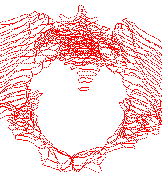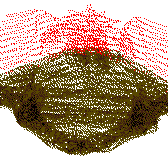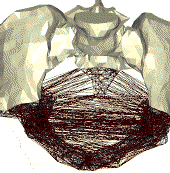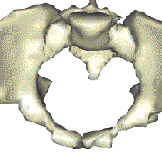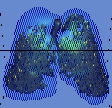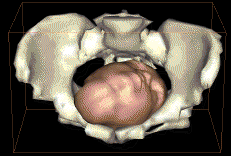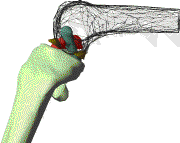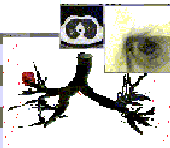Reconstruction from planar parallel cross sections
The data are generally provided by a medical system such as magnetic resonance (MR) which gives several parallel cross-sections of the desired zone. One can then extract the polygonal contours in every cross section, either manually or using tools from image analysis.
